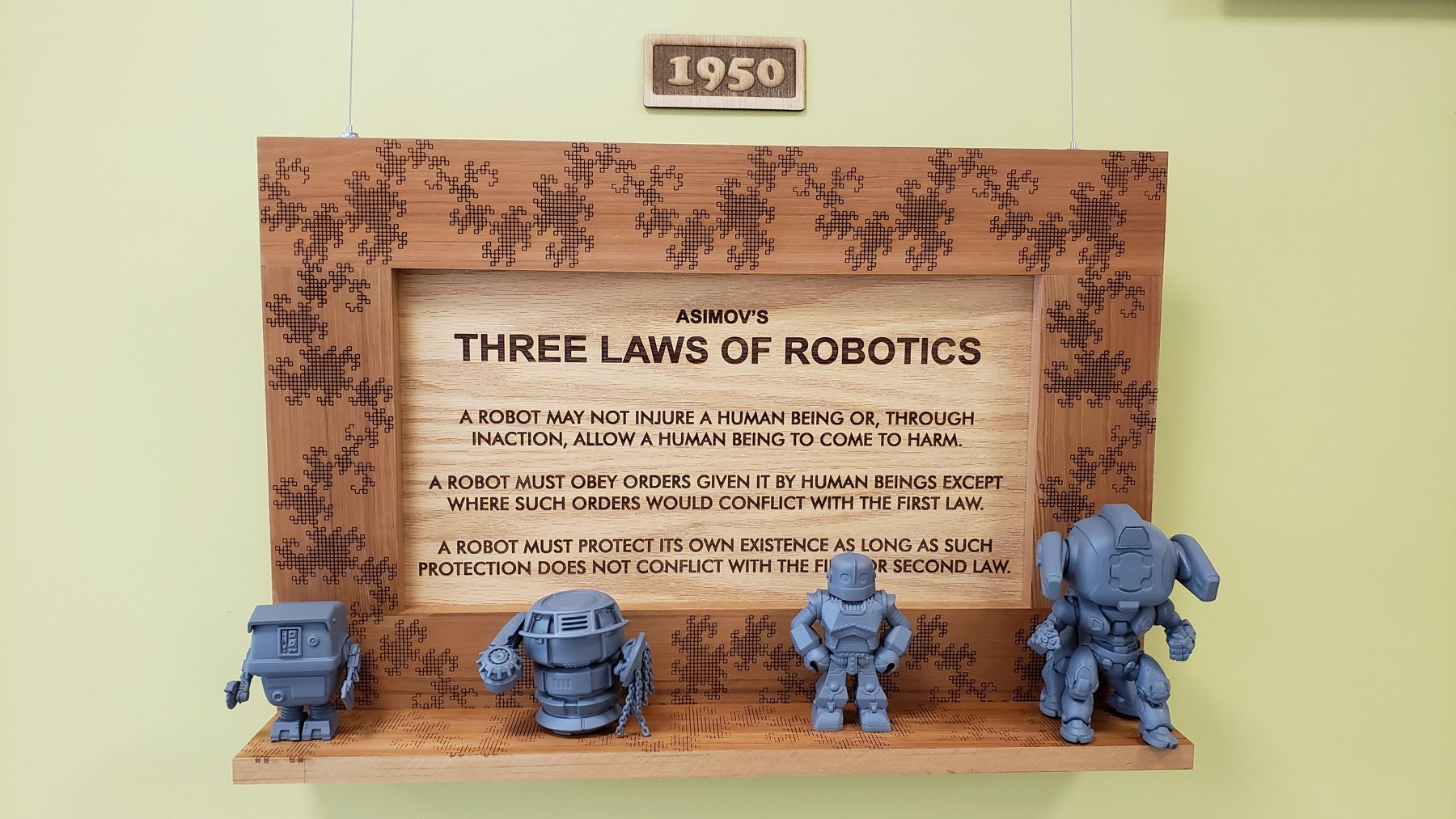Three Laws of Robotics

One of the pieces I wanted to include was a representation of Asimov's three laws of robotics but I wasn't sure of the best visual approach. One idea was to show robots in a conflict (three laws-obeying versus non-obeying). The other idea was to show robots in a state where their programming could go either way (left more to the observer's eye).
But using recognizable robots didn't seem to line up with the idea that their programming could be unresolved. After talking to my brother in-law about the design challenge, he suggested using spray paint to hide the details of any robots I used in the piece in order to make their details less distracting to the observer. And that idea meshed really well with how robots/AIs could be made — they could be programmed one way or the other (and in the case of SHODAN from System Shock, they could be reprogrammed later).
So I went with the blank slate approach. I made the cedar frame with the help of one of the makers, Raymond, at my local maker space (TheShop). Then I used a dragon curve pattern to etch the perimeter of the frame.
 Asimov’s 3 Laws of Robotics
Asimov’s 3 Laws of Robotics
Three Laws of Robotics Exhibit Label
Three Laws of Robotics 1950 by Isaac Asimov
Frame by Edwardo Martinez
Laser-etched dragon curve, assorted robot models on cedar frame
In Isaac Asimov’s short science fiction stories, he introduces the three laws of robotics as safeguards robots should follow. Asimov later defined the Zeroth Law: a robot may not harm humanity, or, by inaction, allow humanity to come to harm. In this visual representation, the robots are shown in a blank slate state. How would the robotic brains be imbued with the laws of robotics? Could they be learned? In one of Asimov’s stories, one robot attempts to resolve the zeroth rule on its own and has difficulty because of the abstract nature of the law.